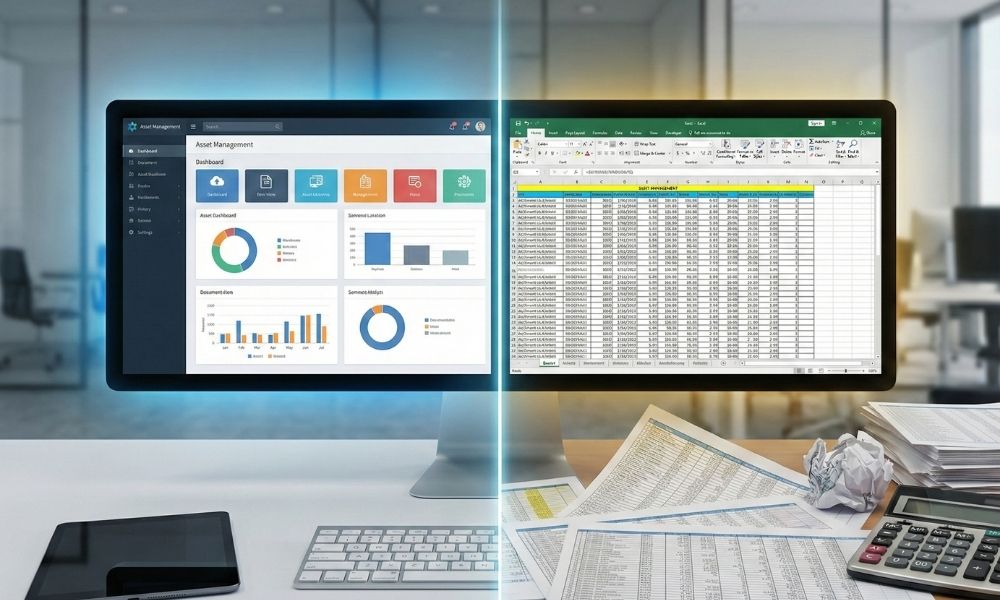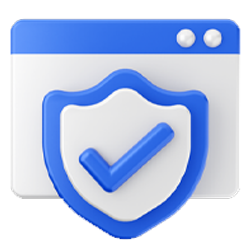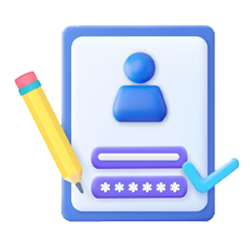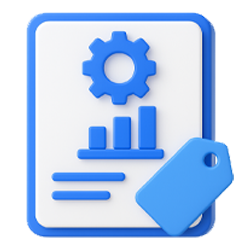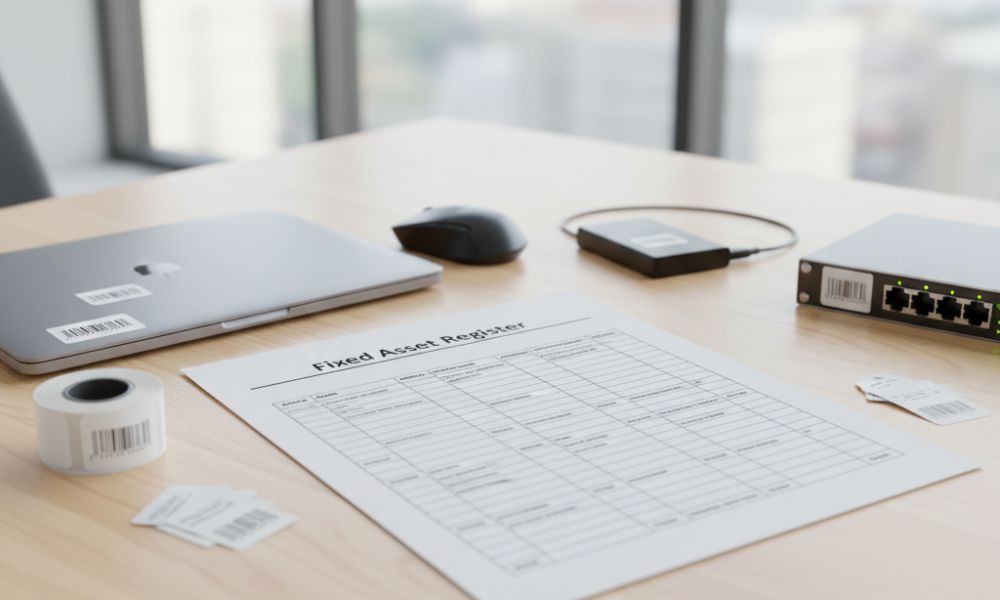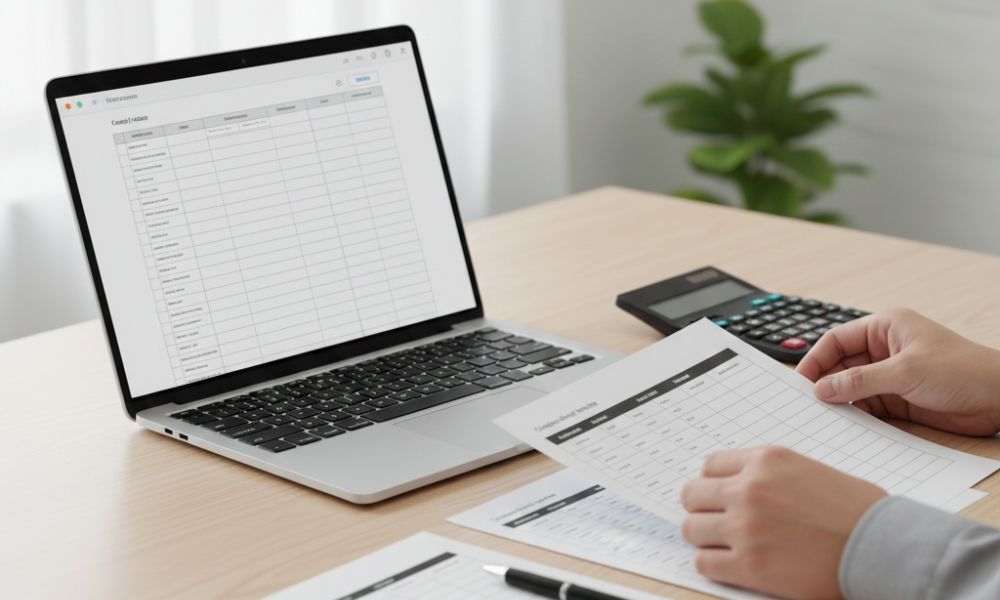Introduction
Managing a growing fixed asset register on Excel can feel like juggling grenades – it’s inherently risky. Research shows about 94% of business spreadsheets contain errors.
Want to ensure your asset register stays accurate and audit-compliant over time? Explore our essential guide to managing fixed asset registers for expert insights, tips, and downloadable tools to set you up right.

So, should you use dedicated software or stick with Excel? In short, Excel can work for a very small asset list. However, as you scale, a dedicated asset register system becomes essential. Upgrading brings automation, improved accuracy, and peace of mind that spreadsheets can’t match. For example, Excel may handle 20 assets well, but at 200 or 2,000, manual effort and error risk increase dramatically.
- Cost: Excel is essentially free; asset register software requires a subscription but delivers ROI at scale.
- Error Risk: Excel is prone to errors; asset register software’s automation and validation dramatically reduce mistakes.
- Scalability: Excel becomes unwieldy as assets grow; asset register software handles thousands seamlessly.
- Collaboration & Control: Excel allows one user at a time, causing version confusion; software enables multi-user access with roles and audit trails.
- Reporting & Insights: Excel reporting is manual and basic; software offers built-in reports and rich analytics.
- Alerts & Reminders: Excel has no alerts; asset register software sends notifications for maintenance, warranty, and compliance dates.
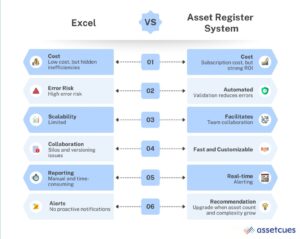
Limitations of Using Excel to Manage an Asset Register
As your asset inventory grows, Excel quickly falters under limitations.
-
Excel’s Initial Appeal – Low Cost & Familiarity (…But Lacks Structure)
Excel’s zero cost and flexibility make it an easy start, but without structured guidance it becomes unwieldy as your asset list grows.
-
Prone to Human Error & Data Integrity Risks
Spreadsheets are notoriously error-prone – one study found nearly 94% of financial spreadsheets have faults. A simple typo or formula mistake can misstate asset values, and Excel won’t catch it.
-
Time-Consuming Manual Updates & Processes
One industry survey found about a third of companies spend over a week each year maintaining asset spreadsheets. All that time spent on upkeep is time not spent on analysis or strategy.
-
Limited Collaboration and Version Control
Only one person can update the asset sheet at a time, leading to version confusion. Excel also has no audit trail or access control, so changes are untracked and unauthorized edits can slip in.
-
No Real-Time Tracking or Alerts
Excel is static and only updates when someone manually enters new information. It has no automatic alerts for upcoming maintenance, warranty expirations, or asset movements. As a result, important asset events are easily missed.
-
Scalability and Reporting Limitations
As asset counts reach hundreds or thousands, Excel becomes sluggish or even crashes. Furthermore, its manual reporting can’t keep up with complex needs, which ultimately leads to missed insights.
Learn more about using Excel templates for asset registers>>
Benefits of a Dedicated Asset Register Software System
A dedicated asset register system (fixed asset management software) is purpose-built to solve these challenges. Therefore, it tracks assets from acquisition to disposal automatically—replacing manual spreadsheets—and consequently brings accuracy, efficiency, and control back to your asset tracking.
-
Improved Accuracy and Data Integrity
Asset register software reduces errors through automation and data validation. Moreover, it enforces correct data entry and auto-calculates values like depreciation to keep records accurate. In addition, every change is logged with a timestamp and user ID, providing a complete audit trail and a single source of truth.
-
Efficiency & Time Savings through Automation
Asset register software automates routine tasks, saving hours of manual work. For example, depreciation calculations run on schedule without any manual formulas, and other repetitive updates happen automatically in the background.
-
Real-Time Asset Tracking & Notifications
Dedicated asset systems update information instantly as assets move or change. They also send alerts for key events (like maintenance due or expiring warranties), so you catch issues early – something impossible with static spreadsheets.
-
Easy Collaboration, Access Control & Security
Asset register software lets multiple users work together on the same real-time database, ending version confusion. It also provides role-based permissions, audit trails, and backups, greatly improving security and compliance compared to Excel.
-
Better Reporting & Analytics
Asset register software provides built-in reporting and analytics that Excel can’t match. It lets you create asset summaries—by location, depreciation, and more—in just a few clicks, instead of manually consolidating data. These features support smarter, data-driven decisions about asset utilization and budgeting.
-
Scalability and Integration
An asset register system scales from dozens to thousands of assets without slowing down, unlike Excel. It also integrates with other business software, allowing asset data to flow automatically. New purchases and depreciation entries sync in real time, eliminating duplicate data entry and ensuring consistency across systems.
Learn more about maintaining a fixed asset register for IT efficiency>>
When to Upgrade from Excel to an Asset Register System
Knowing the benefits is one thing – but when is the right time to make the switch? If Excel is starting to hold you back, consider these common signs that you’ve outgrown spreadsheets for asset management:
- Frequent Errors and Data Discrepancies: You keep finding spreadsheet mistakes and spending hours fixing or reconciling data.
- Asset Data Volume & Complexity Is Exploding: Your asset list has exploded in size, and Excel has become slow and unwieldy.
- Collaboration Bottlenecks and Security Worries: Only one person can update the asset sheet at a time, and there’s no audit trail or access control.
- Reporting and Audits Are Painful: Preparing asset reports for auditors or month-end is a frantic, time-consuming manual ordeal.
- Too Much Time Spent on Asset Admin: Your team spends too many hours updating spreadsheets instead of focusing on strategic work.
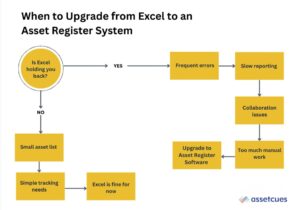
If several of these signs sound familiar, it’s probably past time to move off spreadsheets. The good news is that switching to an asset register system is usually straightforward. The benefits – like less stress and fewer errors – will be apparent immediately.
FAQ
Q: Should I use asset register software or stick with Excel for my asset register?
A: Use Excel only if you manage very few assets and have simple tracking needs. For most growing organizations, dedicated asset register software is the better choice. It reduces errors, saves time through automation, and scales with your needs. While Excel may work early on, once you have more than a few assets, the risk of mistakes and manual workload increases sharply. In contrast, software delivers accuracy, efficiency, and peace of mind as your asset list expands.
Q: Is asset register software expensive?
A: While dedicated software has a subscription or license cost, it often pays for itself by cutting manual work and preventing costly errors. The hidden costs of spreadsheets—such as paying insurance on assets you no longer own or spending hours fixing mistakes—can easily exceed the software’s price. In the long run, asset register software is an investment that saves money, not a net expense.
Conclusion & Call to Action
Spreadsheets may work for asset tracking in the early days, but their limits quickly show as your organization grows. Data errors multiply, time is wasted, and valuable insights are lost. Upgrading to an asset register system is more than a software change—it’s a strategic improvement that brings accuracy, efficiency, and confidence to fixed asset management.
By adopting asset register software, you’ll immediately save hours of work, significantly reduce costly mistakes, and have real-time information on every asset. Instead of scrambling through spreadsheets at audit time or second-guessing whether your asset numbers are correct, the system automatically keeps your data accurate and up to date. Ultimately, it’s a change that pays off in productivity, accuracy, and peace of mind.
Ready to move beyond Excel? Contact AssetCues for a free demo of our asset register software. Don’t wait for the next spreadsheet error or audit crunch – reach out today to future-proof your asset tracking.

